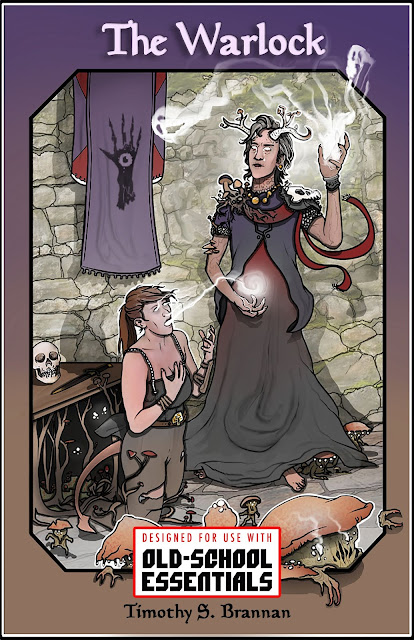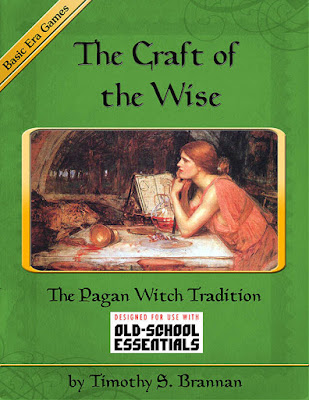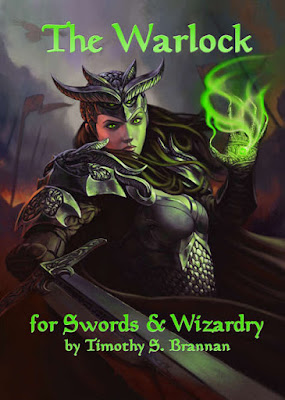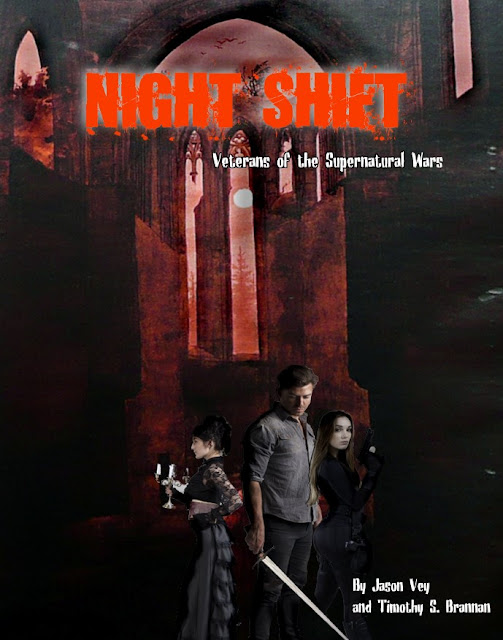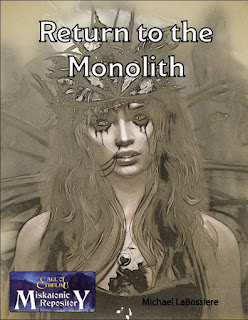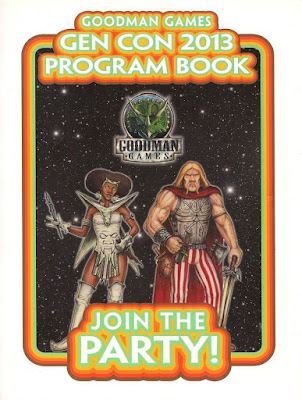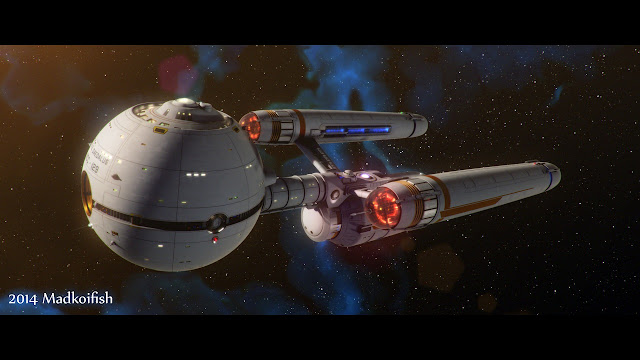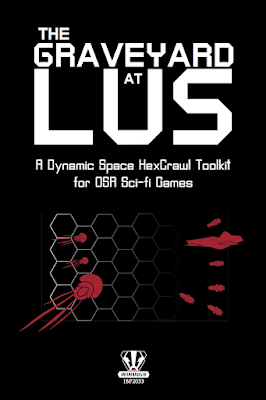
In ages past, the many tribes of man live, survive, explore, and fight their way across the great continent of Mu. It is a land of savage beasts, of mysterious caves to be delved into and their fabulous gems to be taken, of barren wastes and arid deserts, steamy jungles and wide grasslands, and of jagged mountains and hidden valleys. There are many tribes scattered across the continent—primitive and civilised, nomadic and settled, in villages of wood and stone, in cities of caves and cities of mud brick houses. It is a land of secrets and threats, whether of the ancient Saurians who have long abandoned Mu, but are rumoured to have retreated into hiding; of cultists, priests, and strange peoples who hold dark rites to gods inimical to mankind; and of mysteries hidden away in lost valleys and caves. Armed and equipped with weapons and tools made of wood, stone, bone, hide, and fur, adepts, bestials, fighters, oracles, sorcerers, and specialists work to ensure the future of their tribe. To make sure it is fed and clothed, to protect it from predators and rival tribes, to ensure that the gods are kept appeased, and to ensure that their stories and their legend will be told in the tribe’s oral history.
This is the set-up for
Paleomythic: A Stone and Sorcery Roleplaying Game, a new roleplaying game from a new roleplaying game publisher. This publisher is
Osprey Publishing, best known for its military history reference works and within the past few years, for its wargame rules like
Frostgrave: Fantasy Wargames in the Frozen City and board games like the new version of
Escape from Colditz. At the end of 2019, Osprey Publishing again branched out and published its first two roleplaying games. These are
Paleomythic: A Stone and Sorcery Roleplaying Game and
Romance of the Perilous Land: A Roleplaying Game of British Folklore. Of the two,
Paleomythic: A Stone and Sorcery Roleplaying Game is the more obviously interesting, as it visits a genre that is rarely given treatment by roleplaying—the Stone Age, or Stone Punk.
Paleomythic: A Stone and Sorcery Roleplaying Game is one of grim survival and mythical adventures in the land of Ancient Mu, one which transposes the Swords & Sorcery genre—the fantasy subgenre of sword-wielding heroes engaged in exciting and violent adventures in a world with elements of magic and the supernatural—to prehistory and the self-coined ‘Stone & Sorcery’ genre. In fact,
Paleomythic: A Stone and Sorcery Roleplaying Game could actually take place before a ‘Stone & Sorcery’ world or after and before our world and history, but either way, the Player Characters are modern humans.
As modern humans in
Paleomythic, each Player Character is represented by their Name and Age obviously, plus the Traits, Flaws, and Talents. Traits are natural abilities such as Dextrous or Wilful, Flaws are weaknesses such as Clumsy or Sickly, and Talents represent a character’s experience, skills, and specialist training, for example, Barbarian or Cultist. Each Talent provides a speciality or advantage as well as set of equipment. For example, a Storyteller can orate a story or myth for gain—monetary and otherwise, as well as to alter another person’s memory of an event. The Storyteller starts play with a hide hat, cushion, scarf or feathered cloak, and a pouch of gems. To create a character, a player can simply choose all of these elements or he can roll for them. The more Talents a character has, the fewer Traits he has, plus he can select two extra Traits at a cost of one Flaw each. A character’s initial Traits also point towards his background and appearance.
Our sample character is Solumia, a young woman adopted by her current tribe after being found wandering as a child. Her own tribe was lost under circumstances which she either refuses to talk about or cannot recall. Consequently, there are certain fears and rumours whispered about her, which she fostered as a soothsayer, a doomsayer of things to come. She can be thoughtless when it comes to other people and their possessions, but she rarely sees the worst in others. Despite this, she often seems to be lucky and no one has reason to call her a coward.
Name: Solumia
Age: Young
Background: Faced a terrifying challenge that no others would and won; sole survivor of a calamity
Appearance: Upright stance with a wry smile
Traits: Agile, Brave, Careless, Dextrous, Fortunate, Unassuming, Wilful
Talents: Bestial—Savage (bonus die to resist illness and disease, avoid attacks) Oracle—Soothsayer (Dumbfound target, cause dread, sway crowd), Specialist—Crafter (craft item, repair item)
Gear: tunic, belt, shoes, rushlight, two bags, rope, six pieces of fruit, wood spear, hood, dark linen tunic, black feather cloak, bone knife, fur hat, fire making kit, lamp, oil, pack, flaker, hammerstone, needle
Mechanically,
Paleomythic uses dice pools of six-sided dice. The base size of this dice pool is equal to the number of Traits possessed by a character. To have a character to succeed at any task, his player rolls these dice and any result of a six counts as a success. If a character has any relevant Traits, then this adds a further six-sided die to the pool. Talents do add dice, but they do indicate which Trait is appropriate, for example, Charismatic for a Bone Chanter to command a cadaver. Since the Traits are by default determined randomly, this can mean that a character can have a Talent and not have its associated Trait. Conversely, a Flaw deducts a die from the pool. Similarly, the use of an appropriate tool adds a further die to the pool, but this should be rolled separately, or ideally, be a die of a different colour. This is because if a one is rolled on this die, the tool breaks. If a tool breaks, it does not mean that the task has been failed—a Player Character can still roll a six and succeed on the other dice.
So for example, following a raid by a rival tribe, Solumia has joined her fellow tribesmen in chasing after the raiders. At one point, this means crossing over a ravine. Fortunately, there is a fallen tree trunk lying across the ravine—which is how the raiders got so close to Solumia’s village without being noticed—but to cross it, the Game Master asks her player for a test. Solumia has five Traits, so her player will roll five dice, but she also has the Agile Trait, so asks the Game Master if that is appropriate to the situation. The Game Master agrees and the player is now rolling six dice. Solumia’s player rolls 2, 2, 3, 4, 5, and 6—indicating that she has successfully run across the log.Combat uses the same mechanics. Damage inflicted negates a character’s Traits, if only temporarily. A character who loses all of his Traits is rendered unconscious, and should he suffer any more damage, he will be killed. A straight attack will inflict just a single wound, but certain weapons and Talents will inflict more. Armour will negate one Would per attack—prehistoric armour is not good enough to protect more than that, and worse, the protecting armour is damaged in the process and will not provide further protection. Weapons work like tools. They break on a roll of one, but on a roll of six, they provide an additional effect. So an obsidian maul has ‘Destroyed’ as a weapon effect, which means that rigid armour is smashed, soft armour is damaged, but can be repaired, and the target of the blow takes an extra wound, whereas a simple bone knife has the weapon effect of ‘Intimidate’, which means a foe is unnerved and loses his next attack if already wounded. There is no effect if the foe is not wounded or has the Wilful Trait.
Continuing the example above, Solumia and her fellow tribesmen have raced after the raiders and caught up with their rearguard left behind to help the raiders get away. The one attacking Solumia has four Traits—Agile, Dexterous, Brave, and Guileful. He is armed with a hand axe, which has the ‘Pain’ weapon effect, and being sneaky, will ambush Soumia. With four Traits, the Game Master will roll four dice, plus one bonus dice for his weapon and another for his Guileful Trait, for a total of six dice. However, Solumia might spot him beforehand. Her player only rolls five dice, because she has no appropriate Traits. The Game Master rules if he succeeds, Solumia spots the attack and can react, but if he fails, she will be unable to. A result of 2, 3, 4, 5, and 6 means that she does and can attack this turn, but the raider gets to attack first. The Game Master rolls the six dice for the sneaky raider—2, 3, 4, 5, and 6, plus 6 on the bonus die for the weapon—which means one success. Unfortunately, in response to the raid, Solumia did not have time to don any armour. So she takes a blow to the head and loses one Trait which her player decides is her Agility. Now Solumia’s player will be rolling four dice for her Traits. Worse, the weapon effect of ‘Pain’ also takes effect. This stops Solumia using any bonuses due from her Traits on her next action. However, she can act.Solumia turns and stabs at her attacker. Her player will have four dice to roll due to the loss of her Agility Trait. Worse, she cannot gain a bonus die from the Brave Trait because of the painful blow inflicted by the raider, but she still gets the bonus die from the wooden spear, so five dice. The wooden spear also has the weapon effect of ‘Ward’, which will make it more difficult for the raider to attack next turn and so cannot use any appropriate Traits. Solumia’s player rolls 1, 1, 3, and 4, but 6 on the weapon’s bonus die. The raider takes a wound and the Game Master crosses off his Guileful Trait, and the weapon effect means that next turn he is attacking with just three dice, the weapon bonus die, and no Traits! So in effect, Traits lie at the heart of the mechanics to
Paleomythic. In terms of roleplaying, they are a character’s virtues and mannerisms, and of course, flaws. Mechanically, they work as advantages and disadvantages, but they also serve as a character’s Hit Points. When lost in combat or through other damage, their loss both reduces the number of dice a player has to roll to undertake an action and denies the player the bonus which the Trait Seoul’s grant. So a double effect, reflecting the brutal, savage nature of life and combat in the prehistoric world of
Paleomythic.
Another interesting aspect of
Paleomythic is the use of equipment and its fragility. It is possible to purchase equipment at more organised settlements, but by default, the Player Characters are expected to make their own and repair their own. No item possesses any great durability, but unless smashed or lost, they can be repaired. So as much as equipment or a tool provides a bonus, there is an element of a character and his player investing time in them not just because he can use them, but because he has to spend time repairing them too. In addition, the rules in
Paleomythic also cover crafting, climbing, foraging, hunting, trading, trapping, and even locks (though not ones with keys for obvious reasons), all activities that the Player Characters are likely to engage in as they help their tribe.
As well as being a world of savagery and survival,
Paleomythic is also one of mystery and magic. The magic is first reflected in various Talents, such as Mystic, Ritualist, and Shaman. So the Mystic can recall ancestral memories to gain the single use of particular Traits; Ritualists perform rituals to produce effects such as curses, famines, fertility, and more; and a Shaman can enter the Otherworld to commune with spirits, but can also repel, punish, and banish them. The Otherworld is a bleak and hazy reflection of the real world, but is also a place of mysterious ruins, forgotten temples, and dead forests where secrets can be found. The Shaman can automatically enter the Otherworld and bring others with him, so providing another realm for the player characters to explore. What there is not is a codified form of magic or really spells, and all of these various ‘magical’ abilities feel rougher and require more effort to enact.
As to the setting of the continent of Ancient Mu,
Paleomythic describes it in broad strokes. This is because it is a continent of the unknown in time where the only information is orally transmitted rather than recorded. So there are no maps that the Player Characters would see and so no maps for the Game Master. This does not mean that the world is not detailed as
Paleomythic details elements which the Game Master can add to her campaign. So the means to create tribes and settlements, including beliefs, ceremonies, dwellings, leaders, supported by examples. Some of the stranger places across Ancient Mu are also described, such as the City of Dust, a trade city ruled by many chiefs and the Night Tombs, earth and stone mounds which constrain the treasures and relics of a once-powerful tribe, surrounded by marshland and close to the Otherworld. Numerous gods and how and why they are worshipped are also detailed, as are numerous adversaries. These include potential foes, beasts, beast men, the undead, and more.
Notable amongst their absence from this list is anything akin to dinosaurs, but
Paleomythic is very much a roleplaying game where their presence would intrude and detract from the setting. Notable by their presence amongst the various foes is the inclusion of the Serpents of the Forgotten Ruins and the Toad Things of the Black Obelisk, which both hint towards two of the influences upon
Paleomythic: A Stone and Sorcery Roleplaying Game, and that is the writings of Robert E. Howard and Clark Ashton Smith. Obviously, the Swords & Sorcery element is more readily apparent in the setting, but there are hints of—or nods towards—aspects of their stories, whether that is the Serpent Men of Howard’s King Kull stories or Clark Ashton Smith’s toad things and Tsathoggua from his Hyperborean cycle of tales. So as much
Paleomythic draws from the Swords & Sorcery genre, there is just a hint of the Lovecraftian to the continent of Ancient Mu.
For the Game Master there is advice on running
Paleomythic as well as possible adventure types—conflict, travel and exploration, and specialist types, along with tables of potential hooks. In addition, it looks at ‘Paleodelving’, the equivalent of dungeoneering on the Ancient Continent of Mu. A few final notes discuss how to adjust the game to fit a more realistic game in the Pleistocene Epoch with human species and to add elements of technology and civilisation to adjust it to the Swords & Sorcery genre. Rounding out the roleplaying game is ‘Captives of the Beastmen’, essentially a cave delve in which the Player Characters must rescue their fellow tribesmen who have been kidnapped. It is a decent introductory adventure, more detailed than sophisticated, but reasonable enough. It does though point towards a need for more interesting scenarios than ‘Captives of the Beastmen’, which hopefully Osprey Publishing will supply at some point—as well as a campaign.
Physically,
Paleomythic: A Stone and Sorcery Roleplaying Game is a lovely digest sized hardback. Presented in full colour, is well written and very nicely illustrated with painted artwork. A pleasing touch is the use of cave painting-style illustrations which help impart some flavour to the setting. The map for the included scenario is perhaps a little too dark, but that is a minor issue.
There are not many Stone Age or prehistoric-set roleplaying games to choose from, but
Paleomythic: A Stone and Sorcery Roleplaying Game is a good choice. The rules are simple and quick, pleasingly managing to support interesting and flavoursome characters and capture the savage nature of the Continent of Ancient Mu, whilst the Game Master is given the means to create an interesting prehistoric world of her own.
Paleomythic: A Stone and Sorcery Roleplaying Game is a fantastic first roleplaying game from a publisher new to roleplaying games (if not other games), bringing a whole new genre to a forgotten time in a lovely little book.
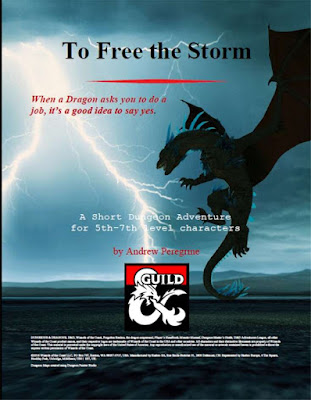 The last thing you should do is say no to a dragon, right? This is a situation in which the Player Characters find themselves in To Free the Storm, a short, one or two session scenario for Dungeons & Dragons, Fifth Edition. Written by Andrew Peregrine, author of The Seventh Doctor Sourcebook as well as contributor to and author of many other roleplaying books, it is an adventure for characters of Fifth to Seventh Level. It is setting neutral, but whatever the setting the Dungeon Master decides to use it with, that setting requires an area of dead and barren land with a volcano at its heart, and a village near the area. As written, the volcano at the heart of the barren land in To Free the Storm is Mawspire Mountain. Now only home to a few hardy mountain goats, local legends say that the region was blasted into lifelessness by a dragon, but since no one can recall having seen a dragon, no one believes the legends. Beyond the barren surrounds of the mountain, the region is fertile, which has drawn settlers who farm the land and loggers who work the forests. One village in the area is Carverton.
The last thing you should do is say no to a dragon, right? This is a situation in which the Player Characters find themselves in To Free the Storm, a short, one or two session scenario for Dungeons & Dragons, Fifth Edition. Written by Andrew Peregrine, author of The Seventh Doctor Sourcebook as well as contributor to and author of many other roleplaying books, it is an adventure for characters of Fifth to Seventh Level. It is setting neutral, but whatever the setting the Dungeon Master decides to use it with, that setting requires an area of dead and barren land with a volcano at its heart, and a village near the area. As written, the volcano at the heart of the barren land in To Free the Storm is Mawspire Mountain. Now only home to a few hardy mountain goats, local legends say that the region was blasted into lifelessness by a dragon, but since no one can recall having seen a dragon, no one believes the legends. Beyond the barren surrounds of the mountain, the region is fertile, which has drawn settlers who farm the land and loggers who work the forests. One village in the area is Carverton.
















